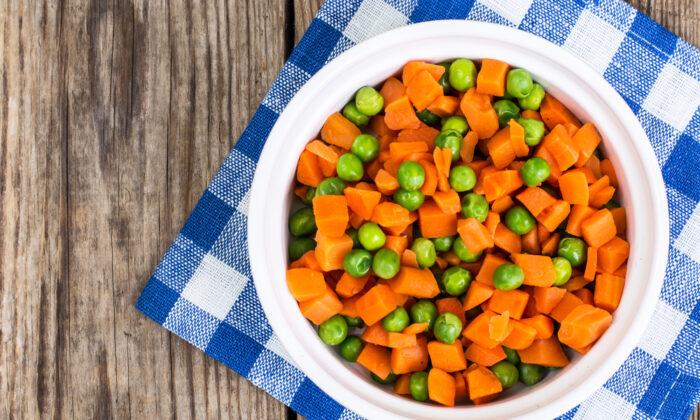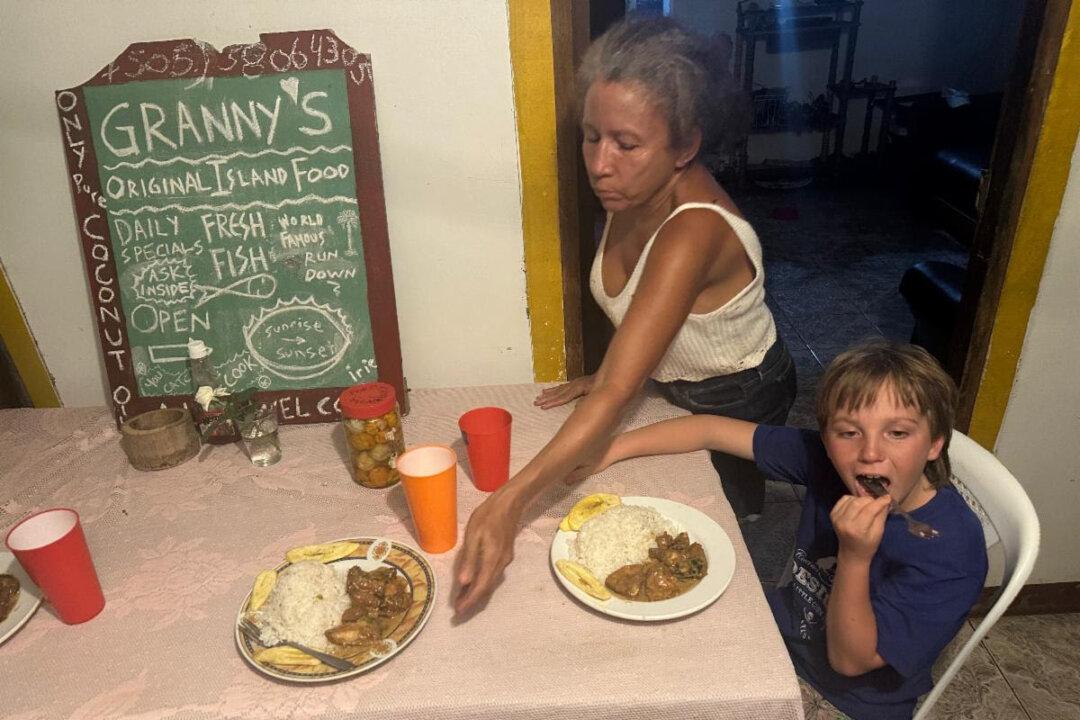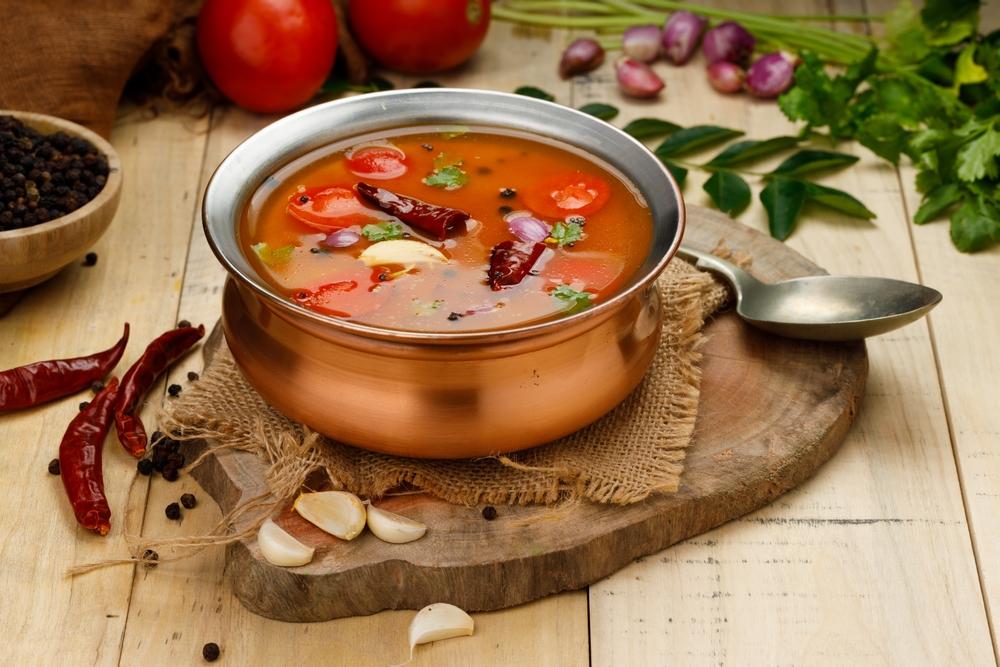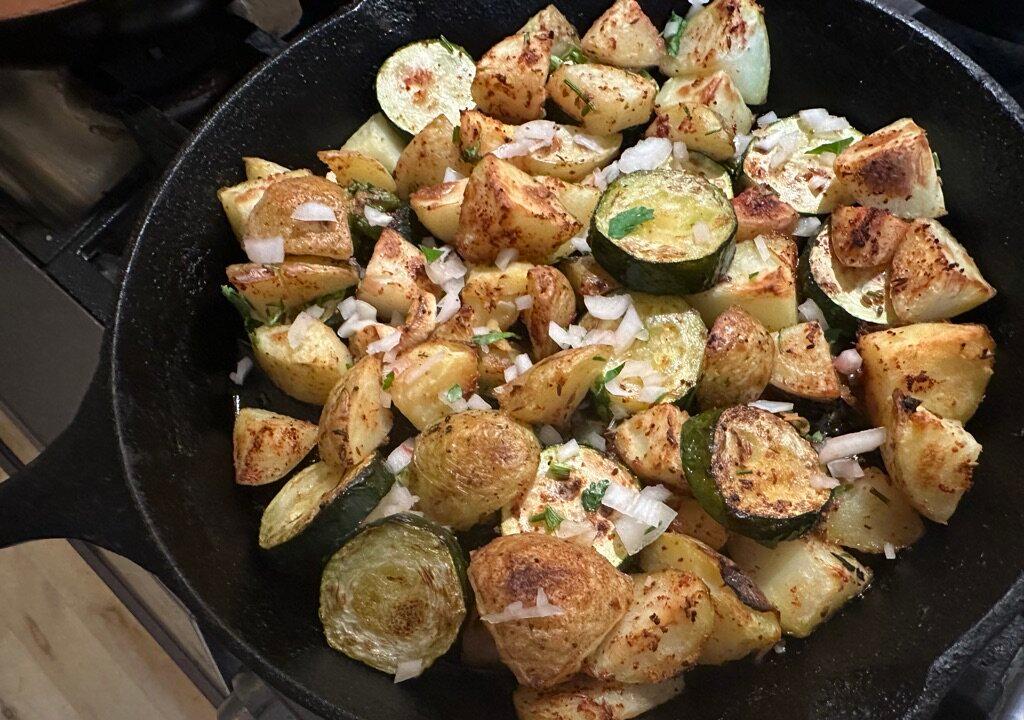Peas have a warm and fuzzy vibe. The very name sounds like peace, and the cliche, “like peas in a pod,” denotes compatibility. Along the same lines, the phrase “like peas and carrots” refers to things that go together harmoniously.
Snap peas, being so sweet and fun to pick, are a hit with kids. Shelling peas, not quite so much, as the kids are often roped into doing the shelling. But when the peas are out of the pod, having a bowl of those vitamin-rich spheroids yields a special kind of power. With a bowl on hand, you can add them to a dish with a flick of the wrist that looks like you’re casting a spell, and in the time it takes to say abracadabra, your dish is healthier, and more fun.
In the garden, the peas are currently in a bit of a lull. The spring peas are starting to wane, although I can still find them at the farmers market. But if the thought of disappearing peas makes you sad, now is actually a great time to plant a fall crop. As long as they get planted 10 weeks before you expect a frost, they will have plenty of time to produce.
Now, about those peas and carrots that supposedly go together so well. Most of us have had that combination as a side dish, usually from a frozen bag. To make them properly, cut the carrots down to pea-size, for easy eating, and cook them separately in salted water.
Do the carrots first, and when they are softened but not mushy, remove them from the boiling water with a pour0us spoon and plunge them into ice water. Then boil the peas. Older peas need more cooking, and if they are of a certain age, you may have to sacrifice that bright green color if you want softness. Then plunge the peas in the ice bath to join the carrots. Next, sauté some garlic butter and make a pea and carrot scampi.
I was in the mood for more of a main course, and came up with something in the spirit of Guyanese cook-up rice, wherein various meats and vegetables are cooked with rice. Each ingredient is carefully added at just the right time, so that by the time the rice is cooked perfectly, everything else is, too.
I tried my first cook-up rice on the outskirts of Cayenne, French Guiana, at the house of some friends. That batch included tripe, chicken feet, and chunks of beef as well as several types of dried beans, which my hosts referred to as “peas.” My peas and carrots cook-up rice does not contain meat, because the dish is satisfying with the peas alone supplying all of the protein. The other flavors come from fresh tomatoes, onions, garlic, and peppers, along with fresh ginger and the Indian spice powder garam masala.
Everything about the dish was festive, including the happy vibes as we lazed around waiting for the cook-up to cook. It was well worth the wait.
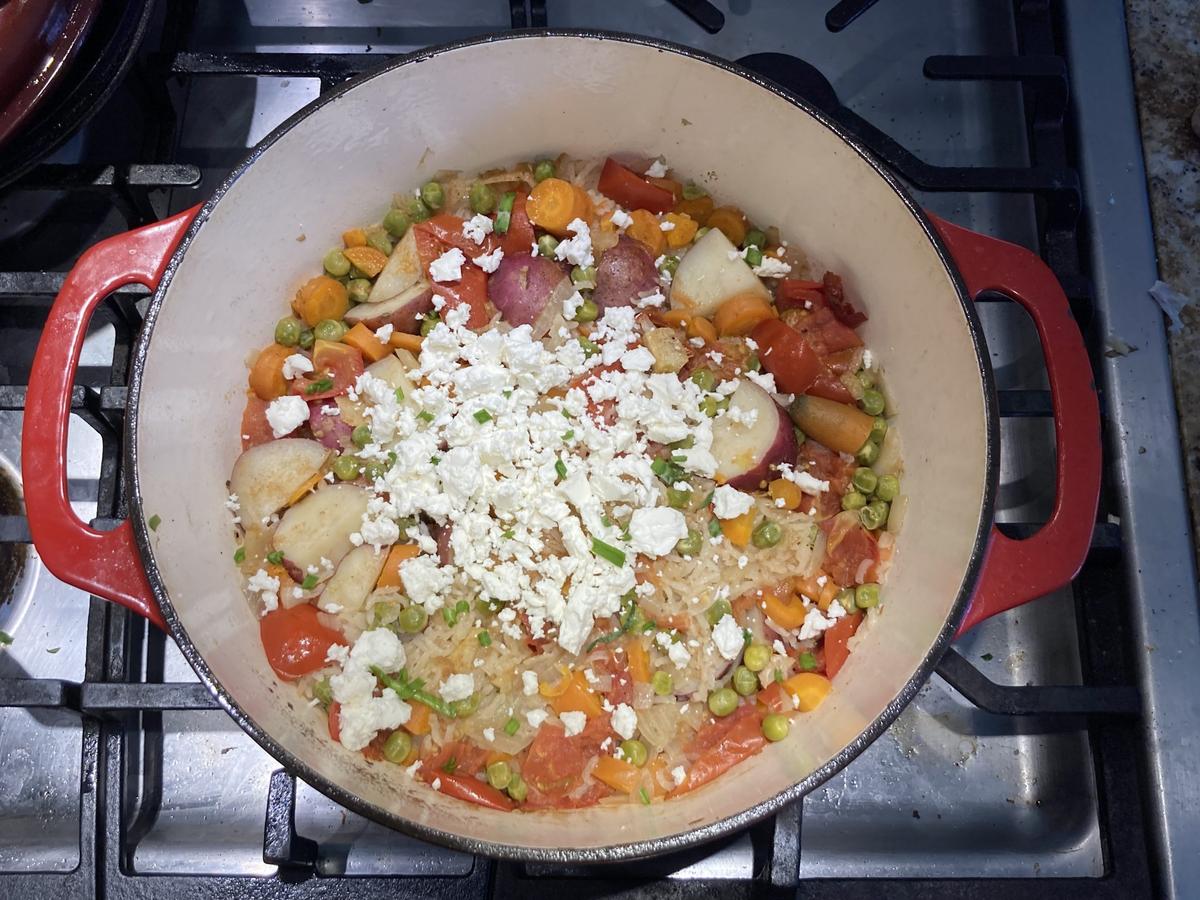
Peas and Carrots Cook-Up Rice
Once you get the hang of cook-up rice, you can play around with all sorts of ingredients. I kept this one vegetarian, so that we can enjoy the bounty of summer without distractions.Authentic cook-up rice is stirred several times as it cooks, but I can’t bring myself to stir rice. And I like the brown skin that develops at the bottom of the pan if you don’t disturb it and cook it perfectly without burning.
- 2 tablespoon butter
- 2 tablespoons olive oil
- 1 onion, minced
- 1 pound potatoes, cubed to about an inch
- 2 teaspoons salt
- 2 jalapeños, or pepper of your choice, sliced
- 3 cloves garlic, minced
- 2 cubic inches ginger, peeled and chopped
- 2 teaspoons garam masala powder
- 1 can diced tomatoes or 1 pound fresh tomatoes, diced
- 2 cups rice (I prefer jasmine, but any will do, including brown rice)
- 2 cups water or stock, plus more as needed
- 1 cup shelled peas
- 2 cups carrots, cut into 1/2-inch-thick rounds
- Feta cheese, for topping (optional)
Continue cooking on medium for about 5 minutes, stirring often, to let the aroma develop. Then add the tomatoes and let the sauce simmer and thicken for another 10 minutes.
While the sauce cooks, rinse the rice in a bowl or pot by stirring it around in water. Then dump and replace the water and stir some more. Repeat the process until the rinse water stays clear. This means the starch has been removed, and the rice won’t stick together.
Taste the sauce and season if necessary. Add the rice, and the water or stock—just enough to cover everything by about half-inch—and stir it all together. Add the peas and carrots and stir again. After that, no more stirring.
Put the cover on the pan and cook for about 20 minutes. Although I frown upon stirring it, you can lift the cover and peek. When the liquid starts to disappear, test a grain of rice. If it has a way to go, you should add another cup of water and replace the lid. Continue adding water, a little at a time, to keep it from burning as the rice cooks. When the rice is cooked, sprinkle on the feta, if using. (It’s not at all authentic, but I think it tastes good.) Put the lid on, turn off the heat, and allow it to rest for another 15 minutes.
Now you may stir it. And serve.

